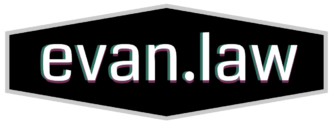Ideation Unlimited, Inc. v. Dan Myers, Case No. D2008-1441 (WIPO November 12, 2008).
A trademark owner who notices that someone else has registered a domain name incorporating the owner’s mark can file an arbitration action under the Uniform Domain Name Dispute Resolution Policy (UDRP for short). This often serves as a quicker and less expensive alternative to pursuing the cybersquatter in court.
To be successful under the UDRP, the “Complainant” has to show all of the following three elements:
(a) the registered domain name is identical or confusingly similar to a trade mark or service mark in which the Complainant has rights; and
(b) the “Respondent” has no rights or legitimate interests in respect of the disputed domain name; and
(c) the disputed domain name has been registered and is being used in bad faith.
Ideation Unlimited, Inc. uses a logo with the word PRESCRIPTION COSMETICS. It has a United States and United Kingdom registrations for this logo. But in the U.S. registration the term “prescription cosmetics” is disclaimed. (Trademark applicants are required to “disclaim” any exclusive rights to use terms within their marks that are generic or merely describe the products.”) In the U.K. registration the word “prescription” is disclaimed.
The panel concluded that “[i]f the Complainant has willingly disclaimed any trade mark rights in the entire term ‘Prescription Cosmetics’, it cannot and should not claim to have trade mark rights in that term by virtue of its . . . registration.”
But what about common law rights, you ask? After all, one can support a UDRP action even without a trademark registration. The panel noted as follows:
Of course, it is not necessary for the Complainant to establish registered trade mark rights – it would be sufficient for the purposes of these proceedings under the Policy for the Complainant to demonstrate common law trade mark rights in the term PRESCRIPTION COSMETICS. However in the Complaint, the Complainant relies heavily on the three device marks, and provides little evidence of common law rights or reputation.
The decision underscores the importance of keeping trademark registrations up to date. Presumably, the mark in question here could have acquired distinctiveness by now (it’s been in use since the mid-70’s) so the disclaimer probably isn’t necessary anymore. And the decision also shows the importance of submitting evidence (at least a declaration) showing what common law or unregistered rights the complainant has.








